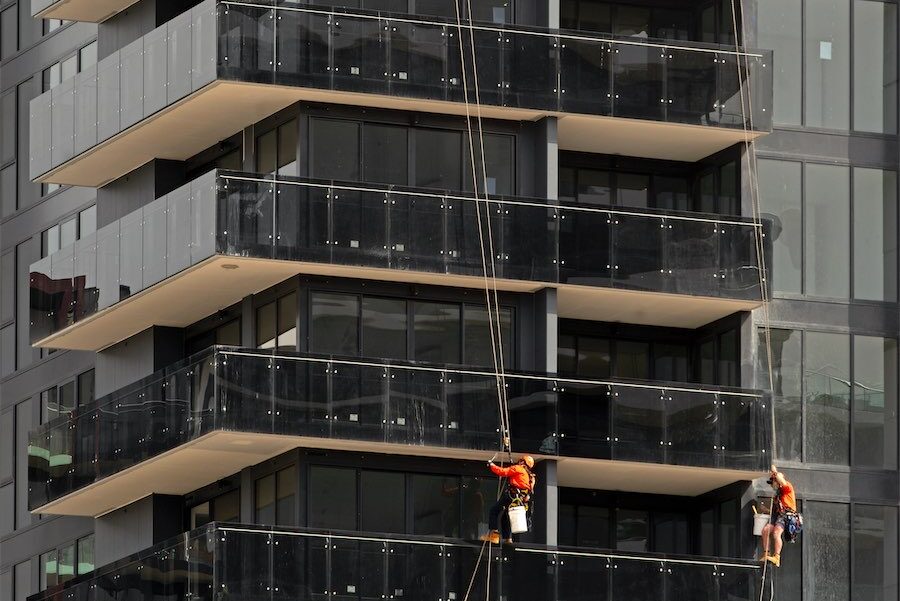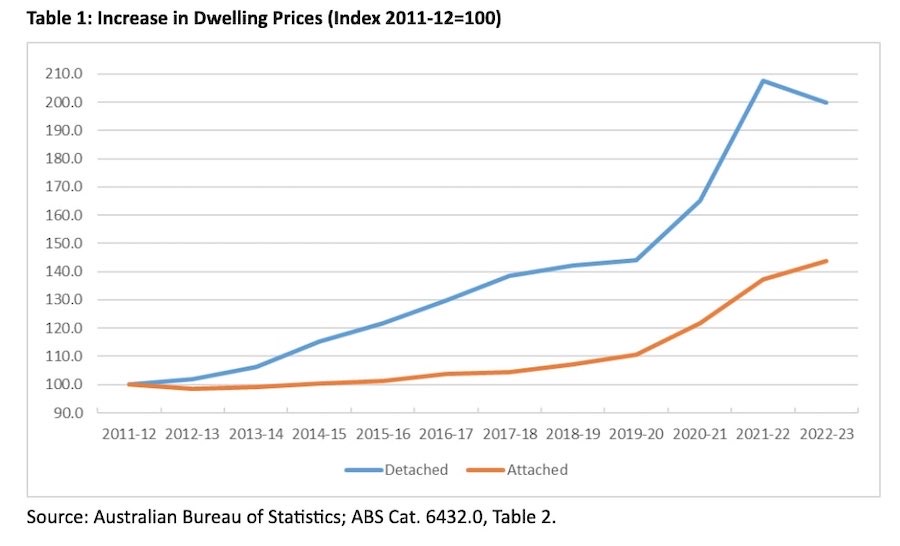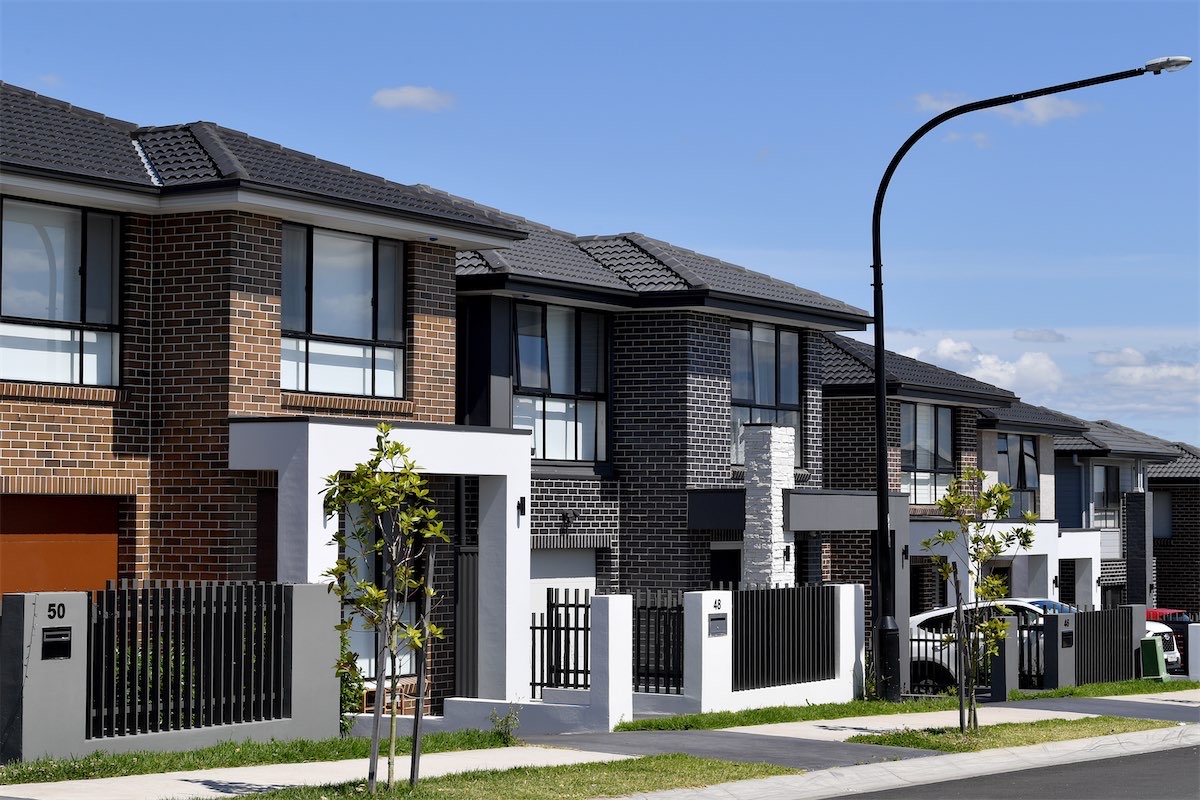
“Adoption of the term ‘missing middle’ in the context of Canberra is lazy and opportunistic. What has been missing is the supply of stand-alone dwelling sites. JON STANHOPE & KHALID AHMED call out the nonsense that is the “missing middle”.
Planning Minister Chris Steel reportedly said that the ACT shouldn’t “become an island of unaffordability for housing, with no housing choice here in Canberra”.
And he also said Canberrans must have a debate about allowing the “missing middle” in our suburbs or risk being eclipsed by Queanbeyan in our housing choices.
Unfortunately, minister, Canberra has been an “island of unaffordability” for many years.
According to the Australian Bureau of Statistics (ABS), in 2021 median rents in Queanbeyan were 22 per cent lower than those in Canberra, and monthly mortgage repayments were 6 per cent lower.
Nevertheless, the realisation by the planning minister of a problem of affordability and housing choices, albeit late, is welcome. But there is no need for a debate.
The term “missing middle” was coined in the last decade in the context of American cities, Chicago and New York in particular, where medium-density developments were difficult under the zoning policies in the post-war period with the only housing choices being high density or stand-alone family houses.
Adoption of this term in the context of Canberra is lazy and opportunistic. What has been missing in Canberra is the supply of stand-alone dwelling sites.
Chart 1 shows the growth in median dwelling prices for stand-alone houses and units indexed to 2011-12 respective prices.
 The chart highlights that house prices in Canberra doubled over the decade, growing at an average compounding rate of 6.5 per cent, while unit prices increased at 3.4 per cent annually.
The chart highlights that house prices in Canberra doubled over the decade, growing at an average compounding rate of 6.5 per cent, while unit prices increased at 3.4 per cent annually.
Before 2012, the ACT government’s policy on the supply mix was 70 per cent stand-alone dwellings and 30 per cent attached and infill sites.
The policy was changed abruptly, and in 2013-14, the government delivered only 601 stand-alone dwelling sites, just 18 per cent of the total supply. This was further reduced in 2014-15 to a mere 329 sites, 9 per cent of the total supply.
The supply of stand-alone dwelling sites was therefore cut to almost one tenth of the level in 2011. The current ACT government policy on supply mix is 30 per cent stand-alone dwelling sites and 70 per cent of the supply in the apartment/attached dwelling category.
It is clear that units and attached dwellings are not what has been missing from the housing market, rather it’s the shortage of stand-alone dwellings that has limited housing choices for the new households being formed and those coming to Canberra. As we have pointed out previously, that shortage will not be met by forcing secondary dwellings on large blocks (insert link).
On the other hand, the surrounding shires have stepped up in supply. It is not just Queanbeyan that provides affordable housing choice for people who work, and otherwise would have lived, in Canberra. The population of Murrumbateman has more than doubled since the 2011 census, growing at an average rate of more than 9 per cent annually.
The shires around Canberra (Queanbeyan-Palerang and Yass Valley) have adopted strategies and plans for significant growth. The land on offer in decent sized lots that allow backyards for children’s activity and gardening, is priced at less than half to a third of the prices (in per square metre) charged in Canberra.
We have written previously on the ACT government’s land supply policy and performance (Barr’s ‘abject failure’ to meet land-supply targets and What a mess Barr’s made of housing supply) highlighting inadequate land supply targets, and even those not being met for years.
The sharp increase in prices from 2019 evident in the chart is a result of undersupply and an inability to respond to surges in demand.
We note the policy to constrain supply, which is exacerbated by underperformance in delivery, is deliberate in order to extract supernormal profits and prop up revenues as evidenced by profit margins and revenue estimates.
General rates have more than tripled
The other factor impacting housing affordability is the government’s taxation policies. According to the ABS (Cat. No.5506.0; Taxation Revenue Australia; Table 9), general rates have more than tripled since 2011-12, rising at a staggering compounding rate of 12.1 per cent a year. Revenue from stamp duty on conveyances increased by 64 per cent while this tax was purportedly being abolished. What is extraordinary is that dwelling transactions were actually 16 per cent lower compared to the 2011-12 activity. If this sounds like double-dipping, it is.
Land tax on rental properties has increased at a compounding rate of 10.1 per cent a year. The increase in this tax, which was also meant to be abolished, has been due to increases in land values – a consequence of constraints on land supply – as well as an increase in tax rates under a misguided policy to push investors out of the market promulgated by The Greens.
It is difficult to believe that landlords in Queanbeyan are any more benevolent than those in Canberra. In this common market, 22 per cent lower median rents in Queanbeyan are in large part due to the relatively lower taxes.
The narrative on “missing middle” is superficially neat and plausible for an unquestioning mainstream media.
However, it is a non-existent problem and hardly a solution to housing unaffordability – a marketing ploy by the development industry with vested interest. What is missing in Canberra are sensible housing and tax policies that work in unison to deliver affordable housing choices.
We have been on record that we support an increase in density and allowing secondary dwellings and even multi-unit developments on large blocks, subject to planning considerations. Those include investment in the necessary infrastructure, for example, water, sewerage, stormwater, road capacity, parking, recreation facilities, amenities and schooling. Most importantly, any proposed developments should protect privacy and be consistent with the existing built form and character of the streets and localities.
If the government is able to address these issues, there will be no need for debate. Debates and indeed stand-offs with the local communities occur when the government abdicates its fundamental planning responsibilities in pursuit of ideological and vested interest driven agendas.
Jon Stanhope is a former chief minister of the ACT and Dr Khalid Ahmed a former senior ACT Treasury official.
Who can be trusted?
In a world of spin and confusion, there’s never been a more important time to support independent journalism in Canberra.
If you trust our work online and want to enforce the power of independent voices, I invite you to make a small contribution.
Every dollar of support is invested back into our journalism to help keep citynews.com.au strong and free.
Thank you,
Ian Meikle, editor




Leave a Reply